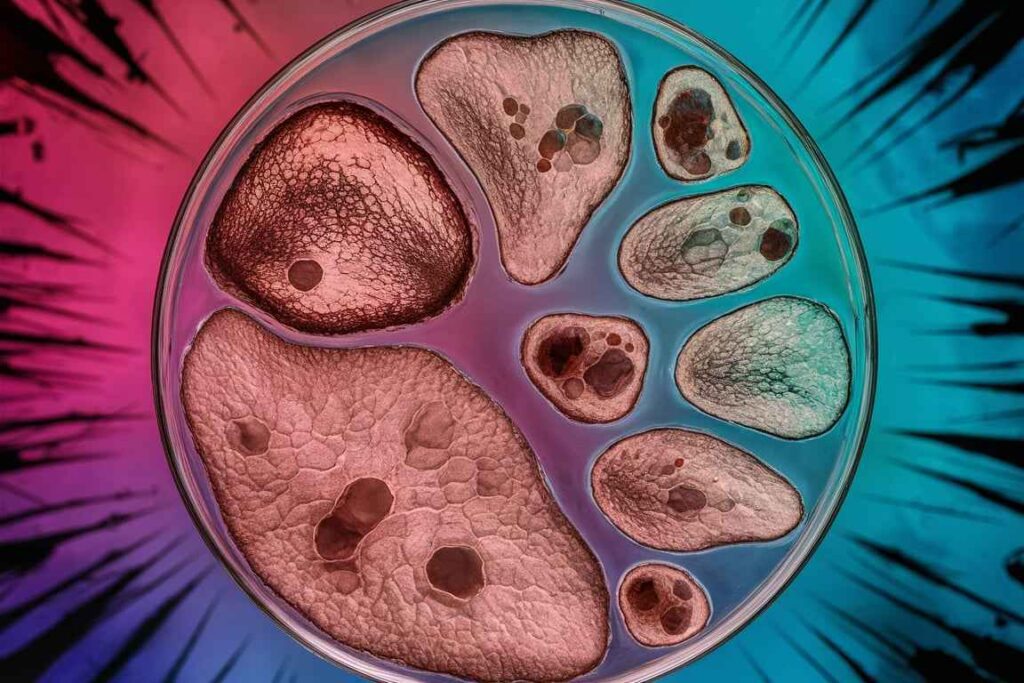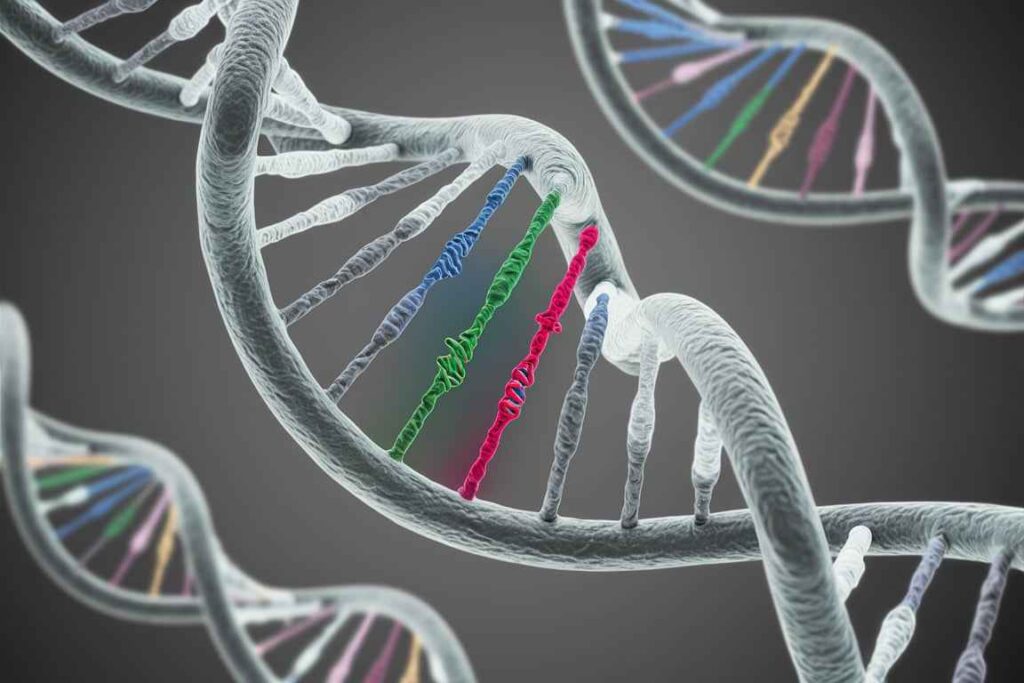Somaclonal variation, a fascinating phenomenon in plant tissue culture, refers to the genetic and phenotypic variations observed in plants regenerated from cultured cells or tissues. This inherent ability of plants to exhibit variability after a period in vitro (outside the living organism) presents a powerful tool for plant breeders and researchers. This comprehensive overview delves into the basis, applications, and limitations of somaclonal variation, exploring its potential.
Table of Contents
Somaclonal variation
Somaclonal variation refers to the genetic variation found in plants generated using plant tissue culture techniques. This condition happens as a result of somatic cell culture, which might bring genetic alterations that were not present in the parent plant. Variations might be genetic or epigenetic, and they can result in helpful, neutral, or harmful features. Understanding somaclonal diversity is critical to plant biotechnology, breeding, and genetic research.

Basis for Somaclonal Variation
Genetic Basis
Somaclonal variance results from a variety of genetic mechanisms:
Chromosomal rearrangements:
Tissue culture can cause chromosomal abnormalities like deletions, duplications, inversions, and translocations. These rearrangements can influence gene expression and cause phenotypic alterations.
Point Mutations:
Single nucleotide mutations may arise during cell division in culture. These point mutations can result in amino acid alterations, which may influence protein function and plant phenotypic.

Transposable elements:
Tissue culture can activate transposable elements, which are DNA fragments that can migrate throughout the genome. This movement may disrupt genes and regulatory areas, resulting in mutations.
Gene amplification and deletion:
The culture environment can cause the amplification or deletion of certain genes, resulting in altered gene dosage and phenotypic variance.
Epigenetic Basis
Epigenetic alterations, which do not modify the DNA sequence but do influence gene expression, contribute to it.
DNA Methylation:
Changes in the methylation status of DNA can activate or silence genes. Tissue culture conditions can cause hypomethylation or hypermethylation, leading to changes in gene expression.
Histone Modifications:
Modifications to histone proteins, which aid in the binding of DNA to chromatin, can alter gene expression. Tissue culture can modify histone acetylation, methylation, and phosphorylation patterns, hence affecting chromatin structure and gene activity.
Noncoding RNA:
Tissue culture conditions can impact the expression of non-coding RNAs, which regulate gene expression at both the transcriptional and post-transcriptional stages, resulting in somatic variation.

Applications for Somaclonal Variation
It has various practical applications in plant breeding, genetic research, and biotechnology.
1. Plant Breeding
Development of Novel Varieties:
Somaclonal diversity can produce plants with distinct characteristics such as increased yield, disease resistance, or stress tolerance. These features can be used to create new plant varieties.
Disease Resistance:
Certain somaclonal variations may be resistant to illnesses and pests. Screening tissue-cultured plants for resistance features helps speed up the development of resistant cultivars.
Abiotic Stress Tolerance:
Variants that are resistant to environmental challenges such as drought, salinity, and severe temperatures can be selected from tissue-cultured plants, helping to generate robust crop types.
2. Genetic Research
Functional Genomics:
Somaclonal variations that exhibit distinct phenotypic changes can be employed to investigate gene function. Identifying the genetic causes of these changes aids in the understanding of gene roles and regulatory networks.
Genetic mapping:
Somaclonal variation can be utilized to identify genes related with specific phenotypes. Researchers can suggest candidate genes for future investigation by comparing genomic alterations to phenotypic variance.
3. Biotechnology
Gene Transmission and Expression:
Tissue culture techniques that cause somatic variation can be used with genetic transformation procedures. This strategy can improve transgenic expression and the stability of added characteristics.
Metabolic Engineering:
Somaclonal variation can affect metabolic pathways, resulting in the synthesis of new molecules or the augmentation of desired metabolites. This application is useful for creating medications, nutraceuticals, and industrial items.
Bioremediation:
Plants with improved ability to absorb and detoxify contaminants can be selected from somaclonal variations. These plants can be utilized in bioremediation operations to clean up contaminated areas.
Limitations to Somaclonal Variation
Despite its benefits, somaclonal variation has some limitations:
1. Unpredictability
Random Nature:
Somaclonal variance is highly random, making it difficult to reliably produce specific desirable features. The unpredictable nature of genetic alterations necessitates thorough screening to uncover advantageous variants.
Unintended Traits:
Along with positive features, somaclonal variation can cause negative changes that impact plant growth, development, and fertility. Identifying and eliminating these undesirable characteristics is time-consuming.
2. Stability
Genetic Stability:
Some somaclonal variants may have genetic instability, resulting in trait reversion or more variation in future generations. This instability affects the development and commercialization of new cultivars.
Epigenetic reversion:
Epigenetic modifications created during tissue culture may revert to their original state over time or under altered environmental conditions, resulting in the loss of desired features.
3. Regulatory and ethical considerations
Regulatory approval:
The commercialization of somaclonal variations, particularly those containing large genetic alterations, may meet regulatory challenges. It is critical to ensure that these plants are both environmentally friendly and safe for human consumption.
Ethical Concerns:
The manipulation of plant genomes via tissue culture and somaclonal variation raises ethical concerns about how far humans should go in altering natural systems. Public perception and acceptance are important variables in the deployment of such technology.
Frequently Asked Question
What is Somaclonal variation?
Somaclonal variance refers to the genetic variation found in plants generated using plant tissue culture techniques. This condition happens as a result of somatic cell culture, which might bring genetic alterations that were not present in the parent plant. Variations might be genetic or epigenetic, and they can result in helpful, neutral, or harmful features.
What are the applications for Somaclonal Variation?
The applications for Somaclonal Variation are
1. Plant Breeding
2. Genetic Research
3. Biotechnology
What are the limitations to Somaclonal Variation ?
The limitations to Somaclonal Variation are
1. Unpredictability
2. Stability
3. Regulatory and ethical considerations
Related Article
Tinea corporis: etiology, clinical manifestation, diagnosis and treatment

